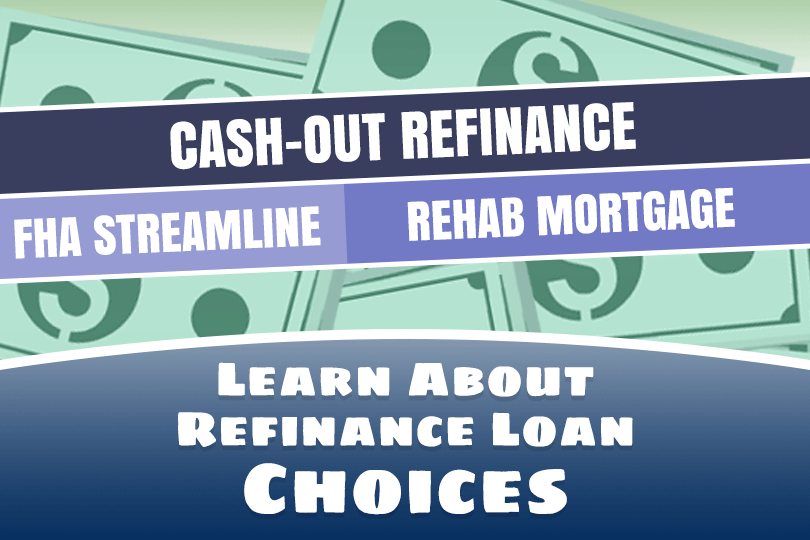FHA Home Loans: Why Refinance?

But some people don’t have a choice but to consider refinancing. They fell behind on mortgage payments and need to get caught up, they have a home in need of a major upgrade, or they applied for a home loan for a property they bought with an Adjustable Rate Mortgage and the lower introductory rate period is ending.
Refinance Loan Options for Those Behind on Their Mortgages
If you fell behind on your home loan payments, refinancing the loan could help you to get current on the mortgage, avoid loan default or even avoid foreclosure. You will need the cooperation of your current lender.
A refinance option is not the same as loan forbearance (though a refinance may come in conjunction with it) or loan modification.
A refinance may include a lender fee, but you should ask your loan officer what options you have to finance certain closing costs if you need to consider doing so.
Refinancing (versus loan forbearance, for example) is an option for those who know they can afford to keep paying the mortgage going forward.
FHA Refinance Loans for Those Who Need to Repair or Renovate
FHA refinancing to upgrade a home is possible. The loan is called an FHA 203(k) Rehabilitation Loan and can be used to buy, renovate, refinance, or renovate a property that would not pass an FHA appraisal otherwise.
The home must be brought to state/local code and FHA minimum standards as a condition of loan approval, and a compliance inspection may be required at the end of the work.
FHA 203(k) Rehab loans are for owner-occupied properties and cannot be used for investment properties or houses you don’t plan to occupy as your full-time residence.
FHA Refinance Loans for Those with Adjustable Rate Mortgages
Do you have an adjustable rate mortgage coming to the end of its introductory rate period? Has your ARM loan teaser-rate period already ended, and you are coming up on another rate adjustment?
Some borrowers need to refinance for these reasons, but a refinance loan at today’s rates may feature a new rate higher than the rate you are paying now. There are two options to consider in a scenario like this. One is to simply keep paying on your current loan and wait to refinance when rates are generally lower. But another option (not ideal for all borrowers) is to refinance into another ARM loan with a new introductory rate. This is a better strategy for those prioritizing protecting their monthly budgets. Those interested in saving money over the mortgage duration may find this approach less appealing.
The bottom line? Those who might need to consider refinancing a mortgage now have options to mitigate some of the pain of higher mortgage rates at press time.
------------------------------
RELATED VIDEOS:
There's a Difference Between APR and Interest Rates
Choose Your Mortgage Lender Carefully
Getting Started With Your FHA Loan Application

Do you know what's on your credit report?
Learn what your score means.







